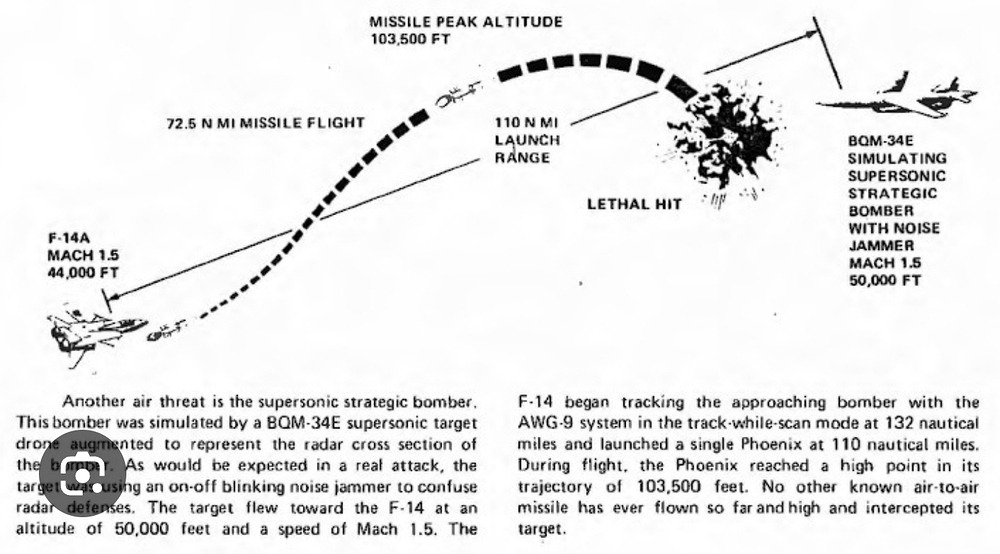First problem with this statement is that the loft code provided by Dark_Claw is not necessarily “optimal” it is simply an improvement over the current loft code, just like the current AIM-54 loft code was an improvement over the OLD AIM-54 loft code, which was also tested by Dark_Claw:
Spoiler
Old loft code:

Current in-game loft code:

Secondly, there is no way the AIM-54 is achieving an altitude of 103 500ft needed to achieve this known shot using the current in-game loft code:

So at the very least, we can tell its not lofting enough.
Thirdly, the inefficiencies you speak of are likely more due to hardware limitations of missiles control sections, along with chosen guidance method. As tripod stated, there are more complex guidance controllers that can be used than simple PID controllers, with some modern missiles like the IRIS-T using H-infinity controllers because they are vastly more adaptable and applicable to the complex environment of an aerial intercept, but their complexity and limitation of hardware prevented it from being used until the early 2000’s for examples. There’s also the fact that gaijin does not model issues such as inefficiencies, and systems in-game are generally modelled under the assumption of ideal capabilities.
Gaijin is already playing with the loft profiles of the modern ARH along with many ground attack munitions, and all ARH’s have energy management code EXCEPT the AIM-54C. As do the R-23R, R24R, AIM-7F, AIM-7M, R-27R, R-27ER, and Super 530D. The AIM-54’s are the outliers in WT, I’m asking for them to be brought to the standards of the norm.
Your entire argument holds no water “we have no idea about any guidance control criteria’s for AIM-54 beyond the fact that we know it lofts, and has been known to achieve incredible heights during said lofting under certain criteria’s, therefore, I don’t want to see its loft profile improved even if it is changed to more closely reflect what is most likely the more realistic of 2 options”. That “justification” if it can even be called that boils down to “I don’t know and I don’t want it to be better” its childish.
Your arguments moments before that was that the loft profile change “won’t yield game impact differences unless much bigger maps is advocated for that would allow the F-14 to stretch its legs”
Spoiler
So you did a full 180 from “nah, a change to the loft profile wouldn’t change anything” to “no I don’t want the loft profile improved because I don’t think it should be”, simply from evidence coming to light that improvement to the loft code would in fact have a positive impact on the missile in the current state of the game.
Finally, to throw you a bone about the “inefficiencies in guidance”, the improved loft profile still didn’t include energy management code. It only changed 3 values of the loft code specifically, so it could very much still be refined some more, therefore fitting your idea that, for whatever reason, the AIM-54 deserves to be arbitrarily less efficient in its flight profile than all other radar missiles above 11.3 “just cuz”.





